The document discusses generative AI and its implications for cybersecurity, covering various AI techniques such as generative pre-trained transformers and generative adversarial networks. It highlights the role of AI in enhancing cybersecurity through improved threat detection, anomaly detection, and proactive defenses against cyber threats. The need for AI in cybersecurity is underscored by its ability to process large datasets, minimize human error, and support advanced threat modeling and detection strategies.



![Four Main Types Of Generative AI (GAI)
Techniques [1]
•Models that generate human-like text across
various languages and styles, improving with
each version through larger training datasets.
Generative Pre-trained
Transformer (GPT)
• Two neural networks, a “Generator” and a
“Discriminator”, work together.
• The generator creates content, and the
discriminator judges its authenticity, aiming for
indistinguishably realistic outputs.
Generative Adversarial
Networks (GANs)](https://image.slidesharecdn.com/generativecybersecurityai-240408161138-1b52f403/75/AI-Cybersecurity-Pros-Cons-AI-is-reshaping-cybersecurity-4-2048.jpg)
![Main Types Of Generative AI (GAI) Techniques [1]
•Starts with data,
adds noise, then
learns to reverse
this process,
creating high-
quality content
from random
noise.
The
Generative
Diffusion
Model
(GDM)](https://image.slidesharecdn.com/generativecybersecurityai-240408161138-1b52f403/75/AI-Cybersecurity-Pros-Cons-AI-is-reshaping-cybersecurity-5-2048.jpg)
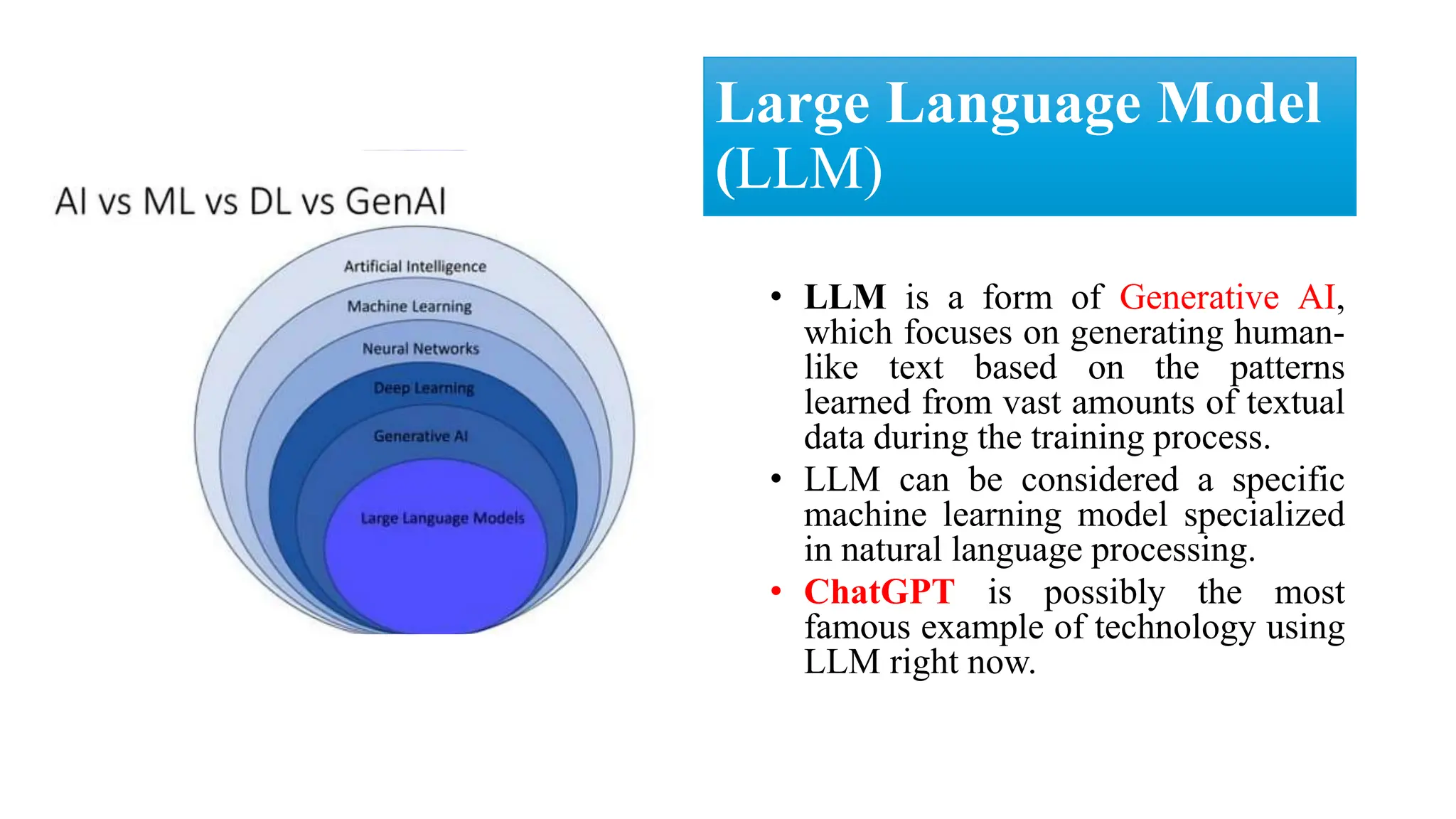
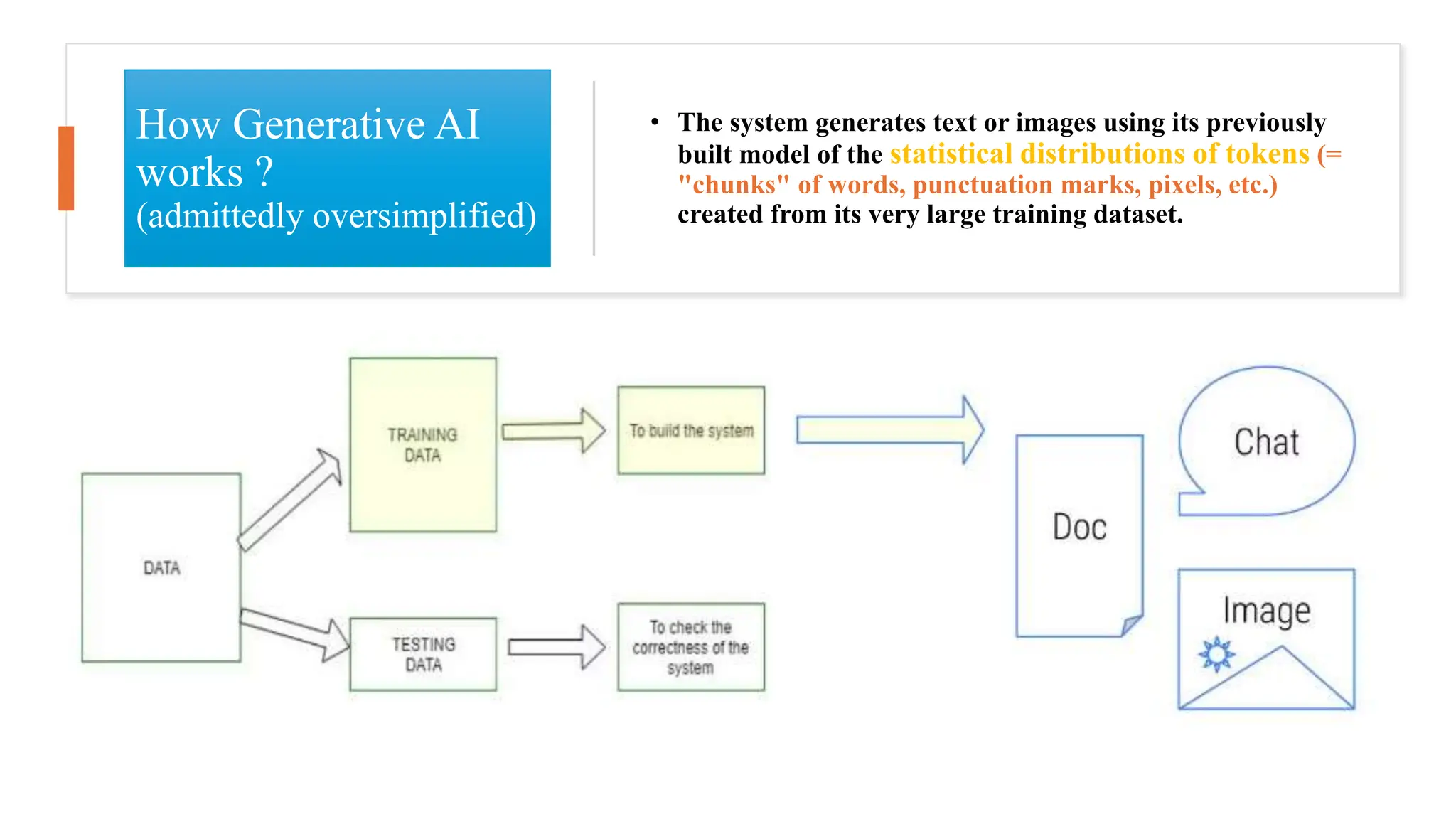

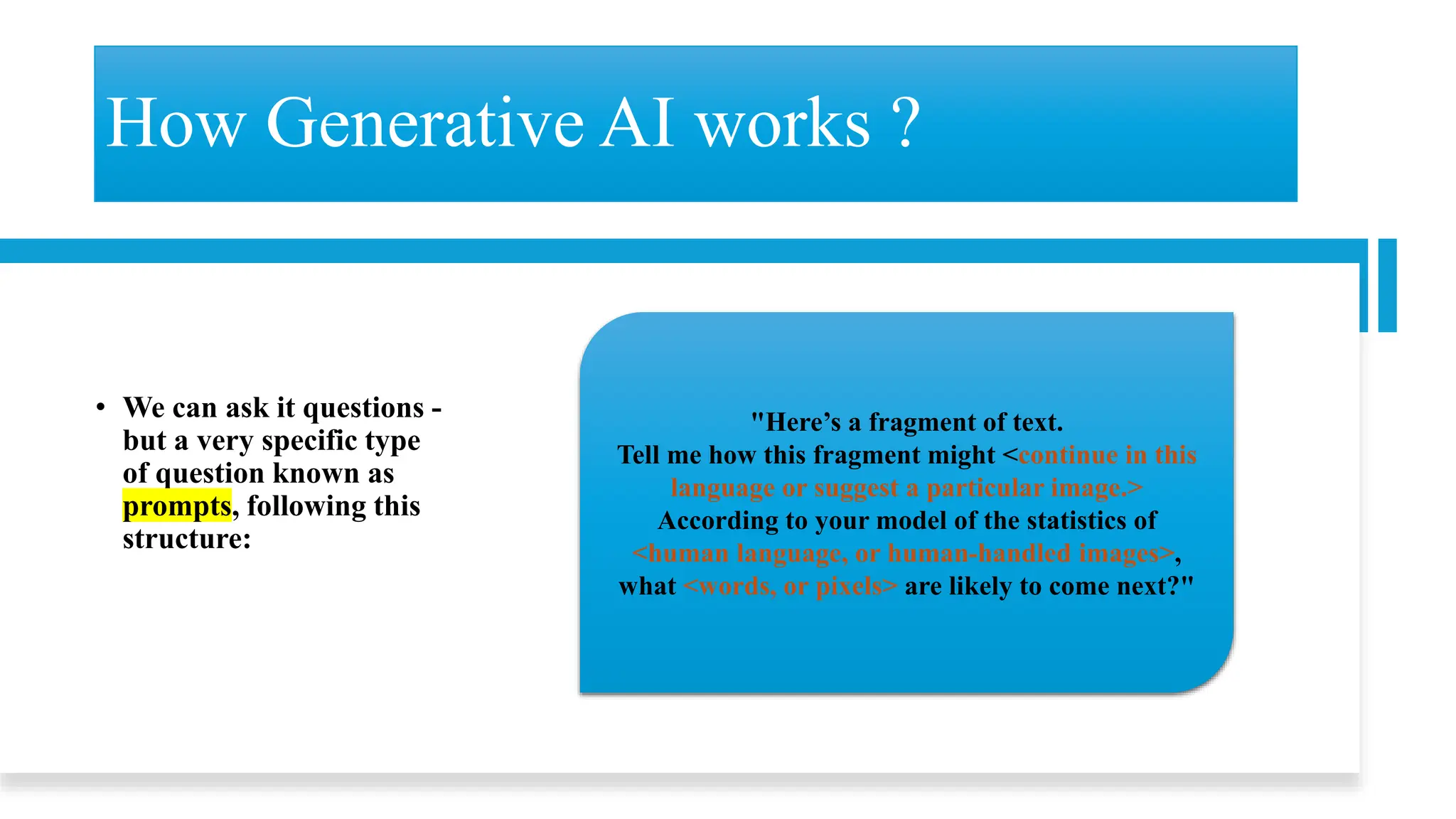
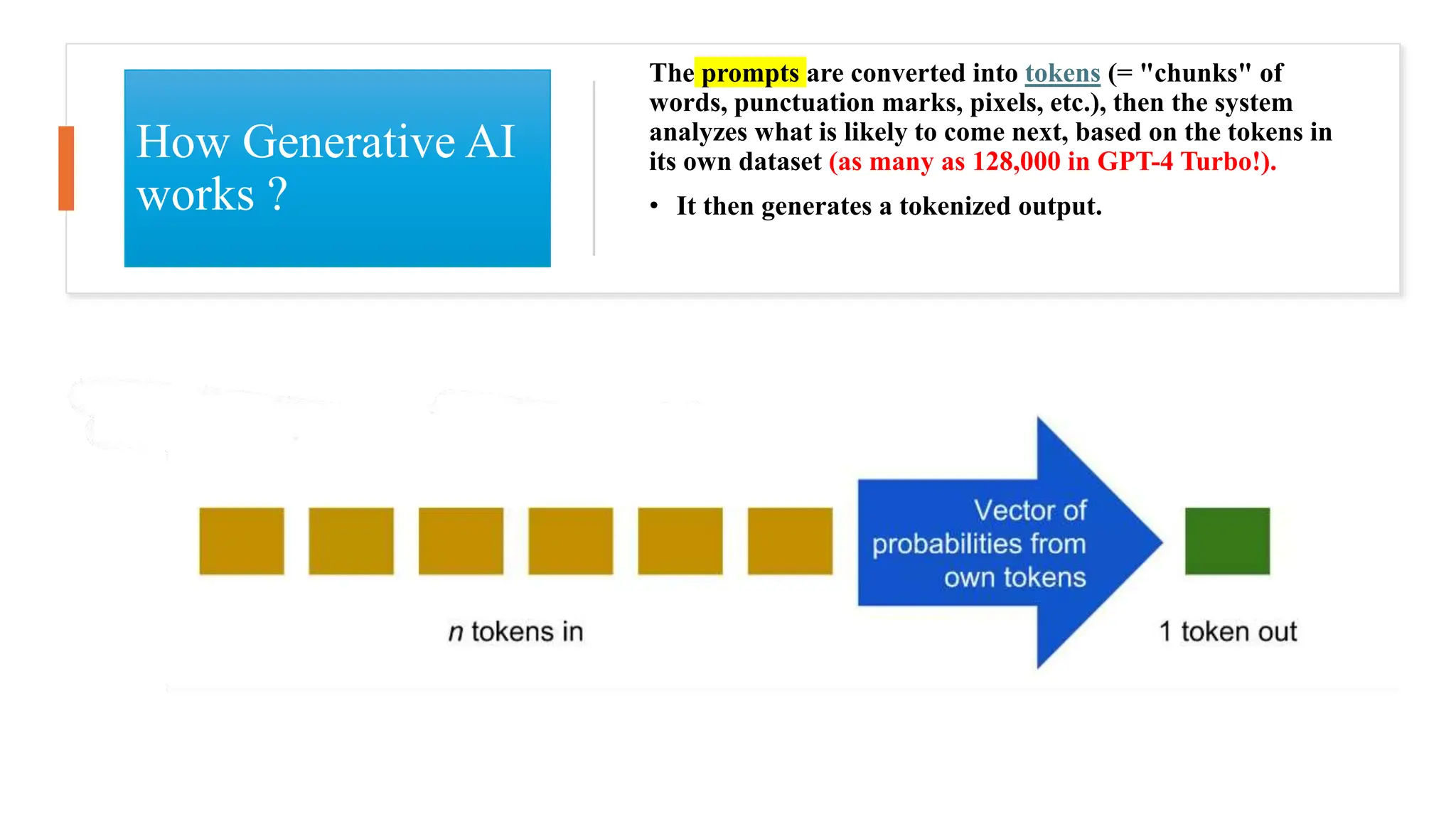
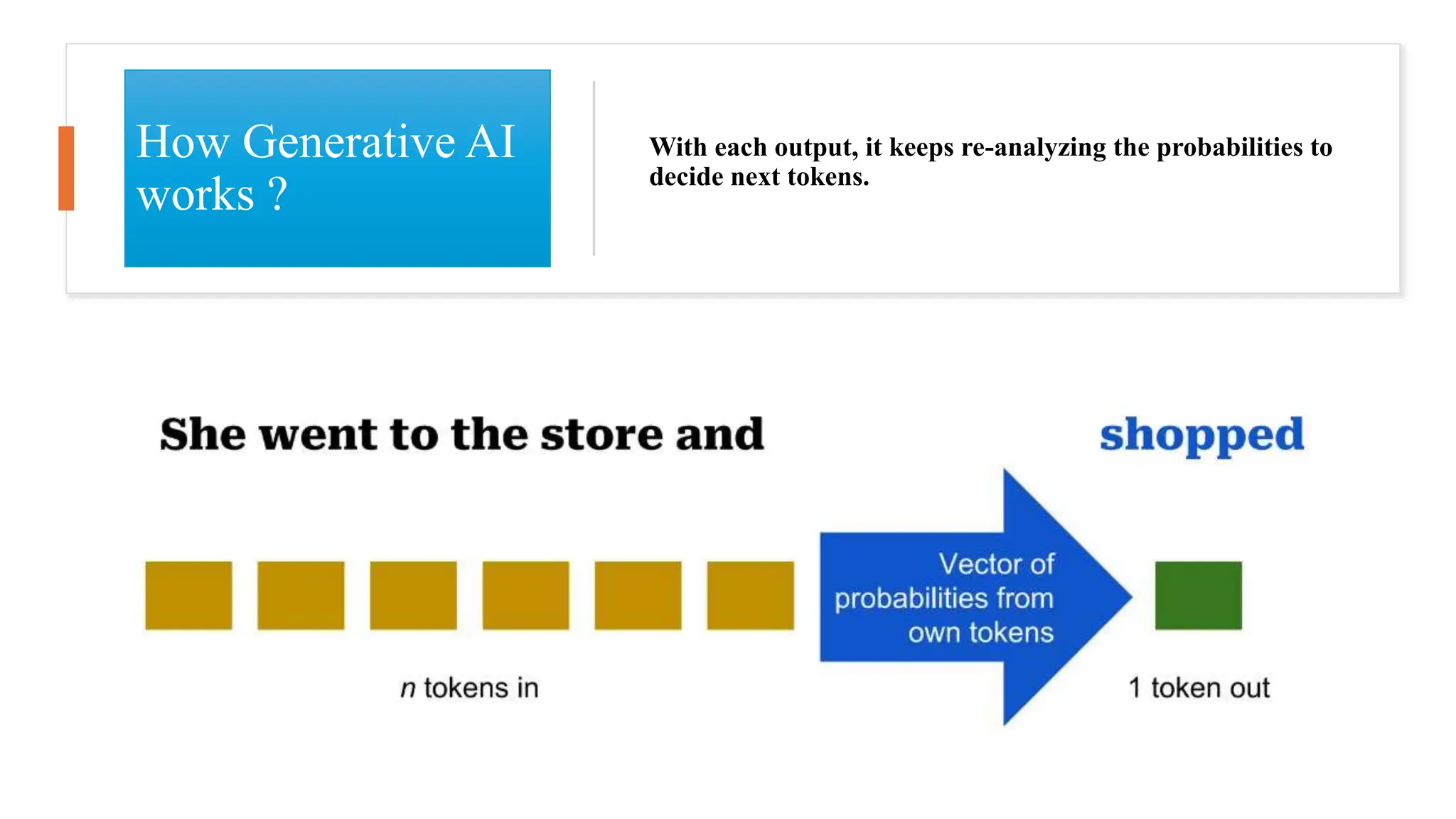
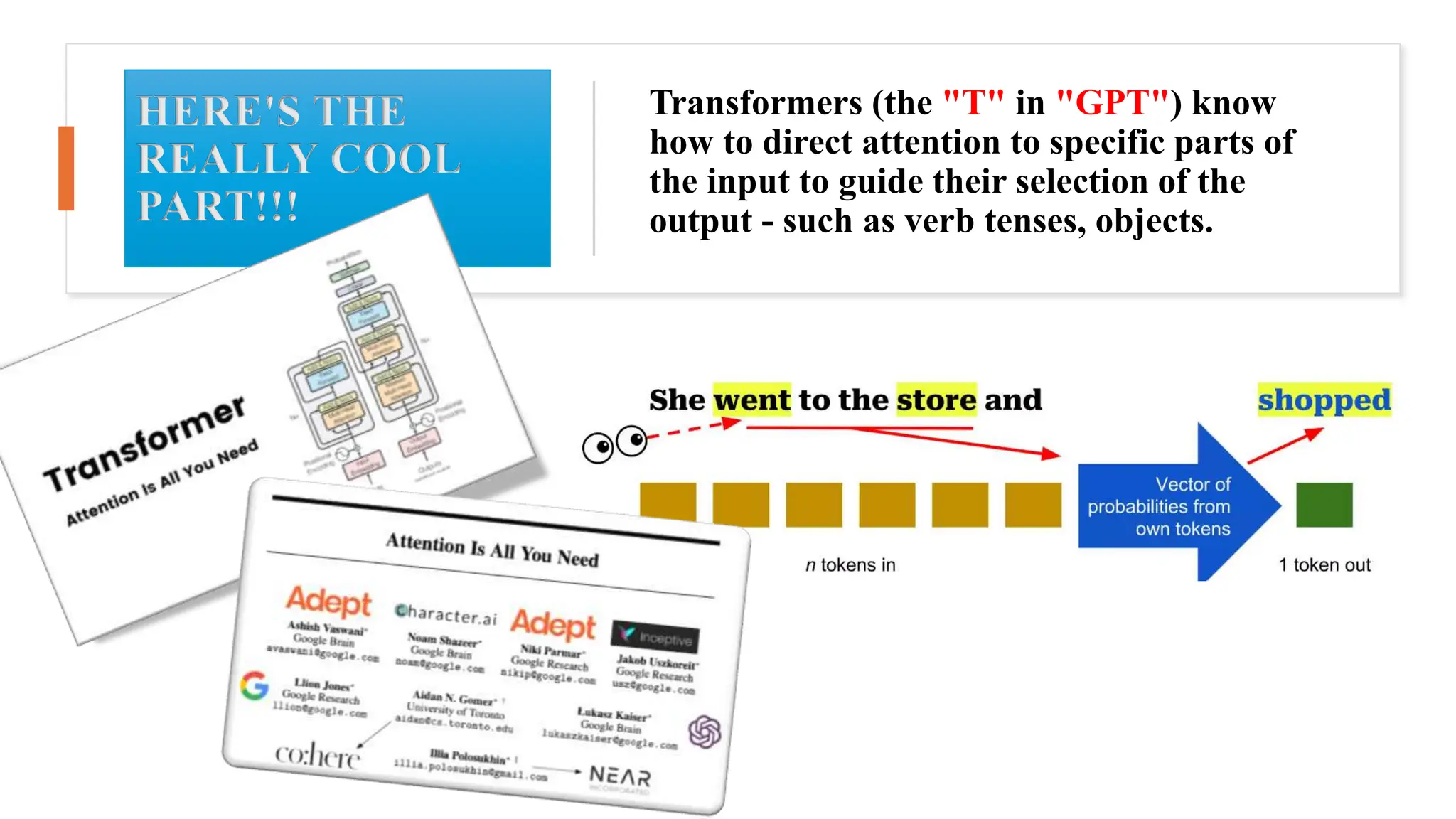
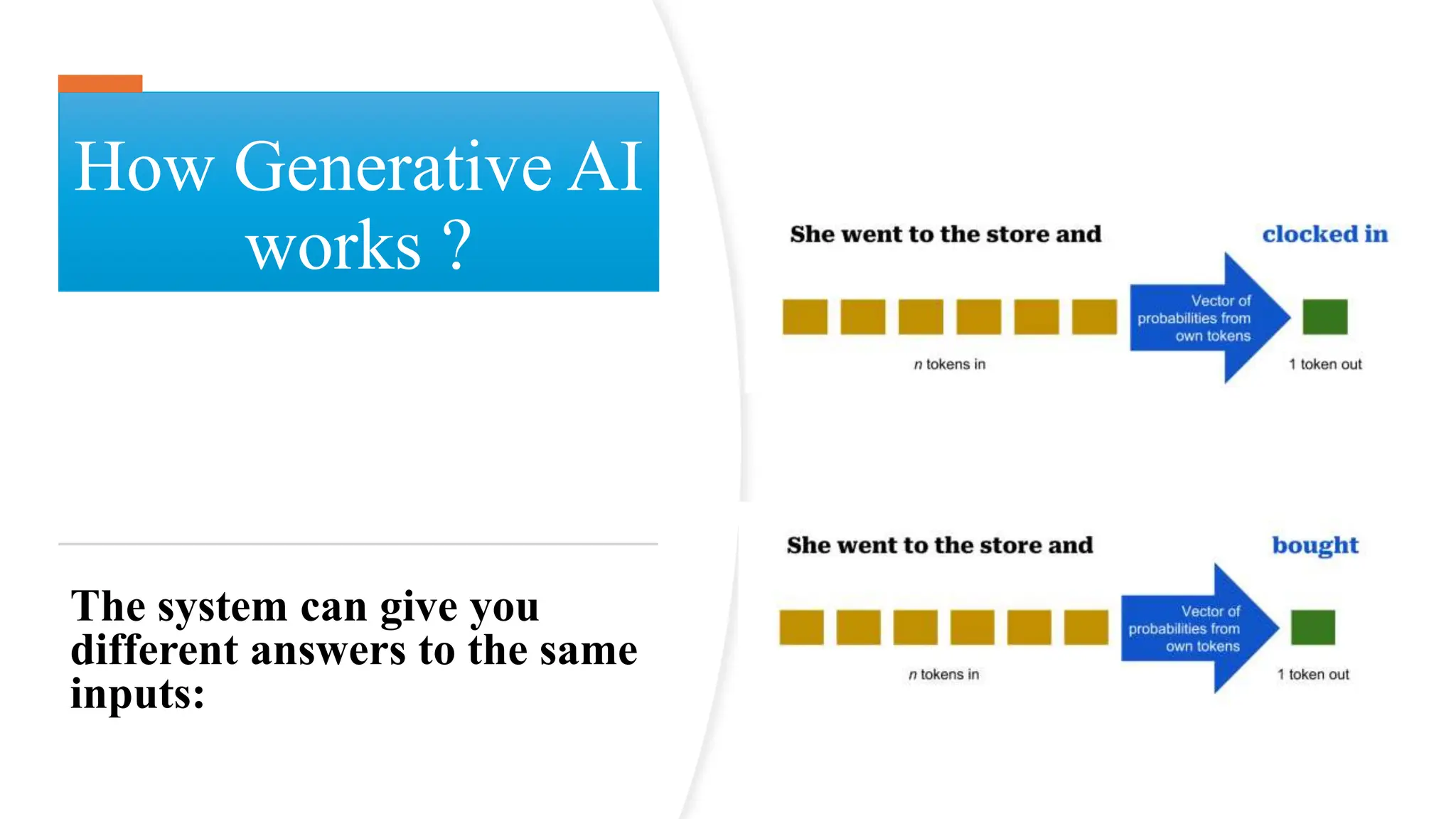
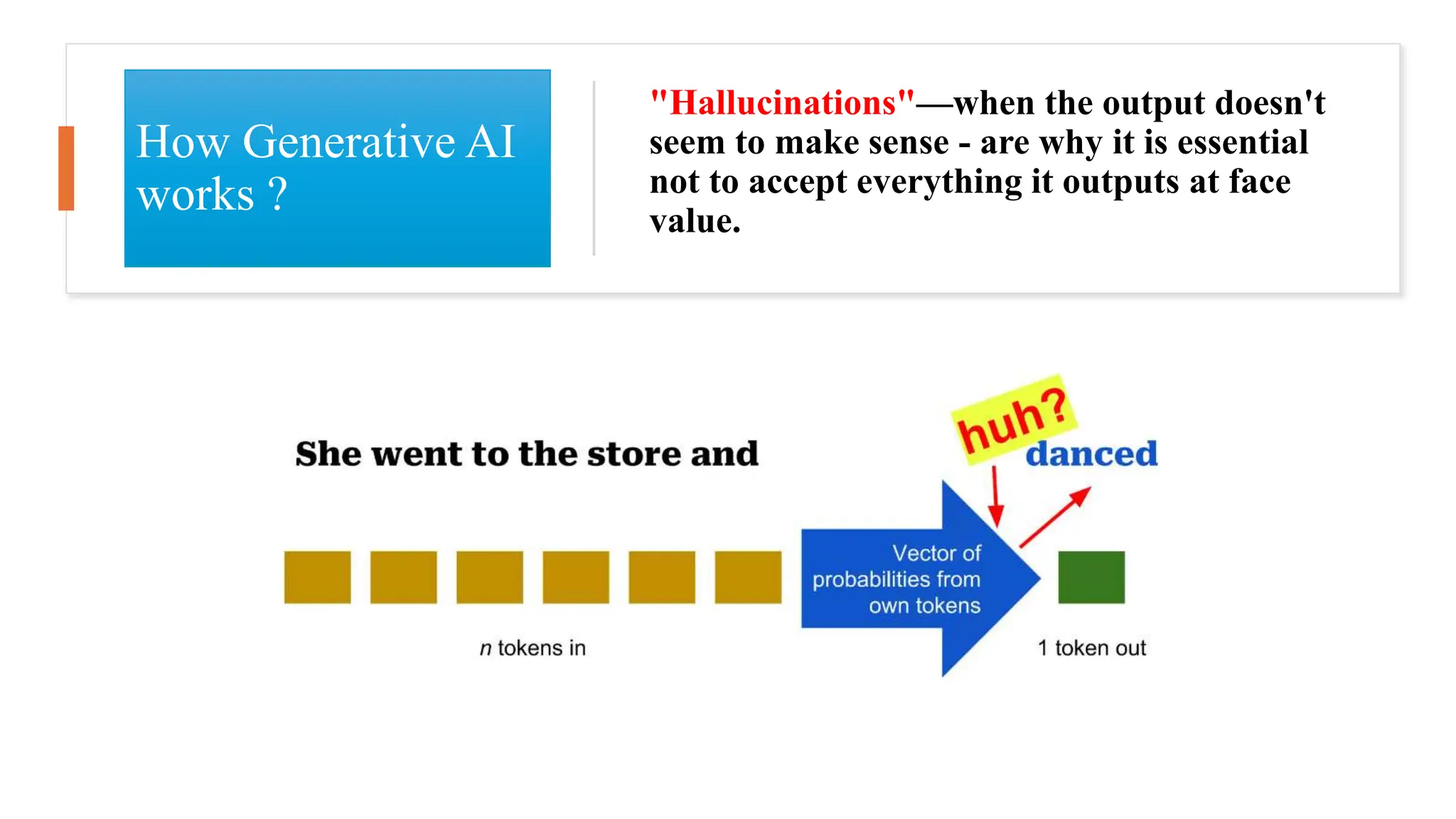
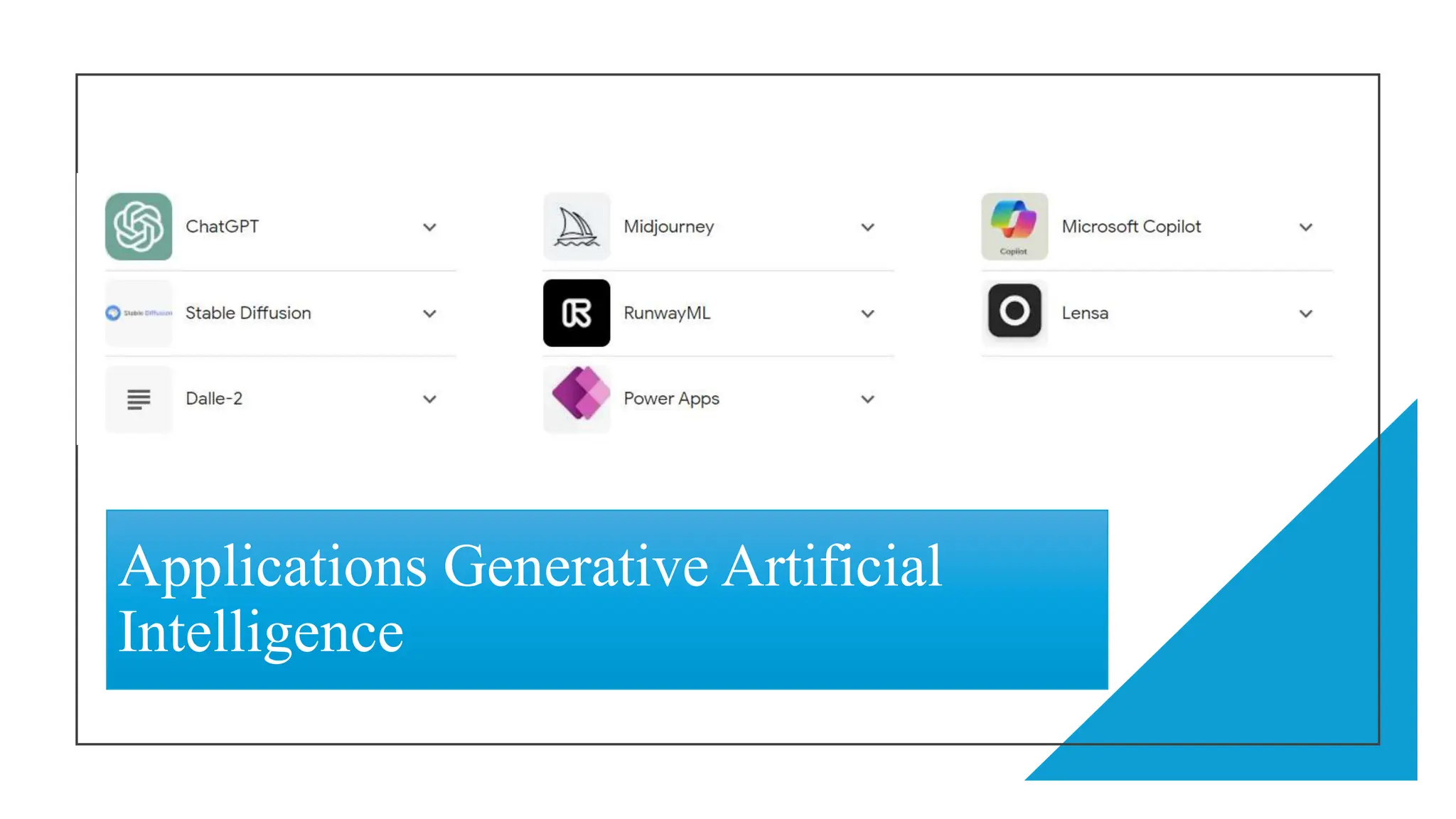




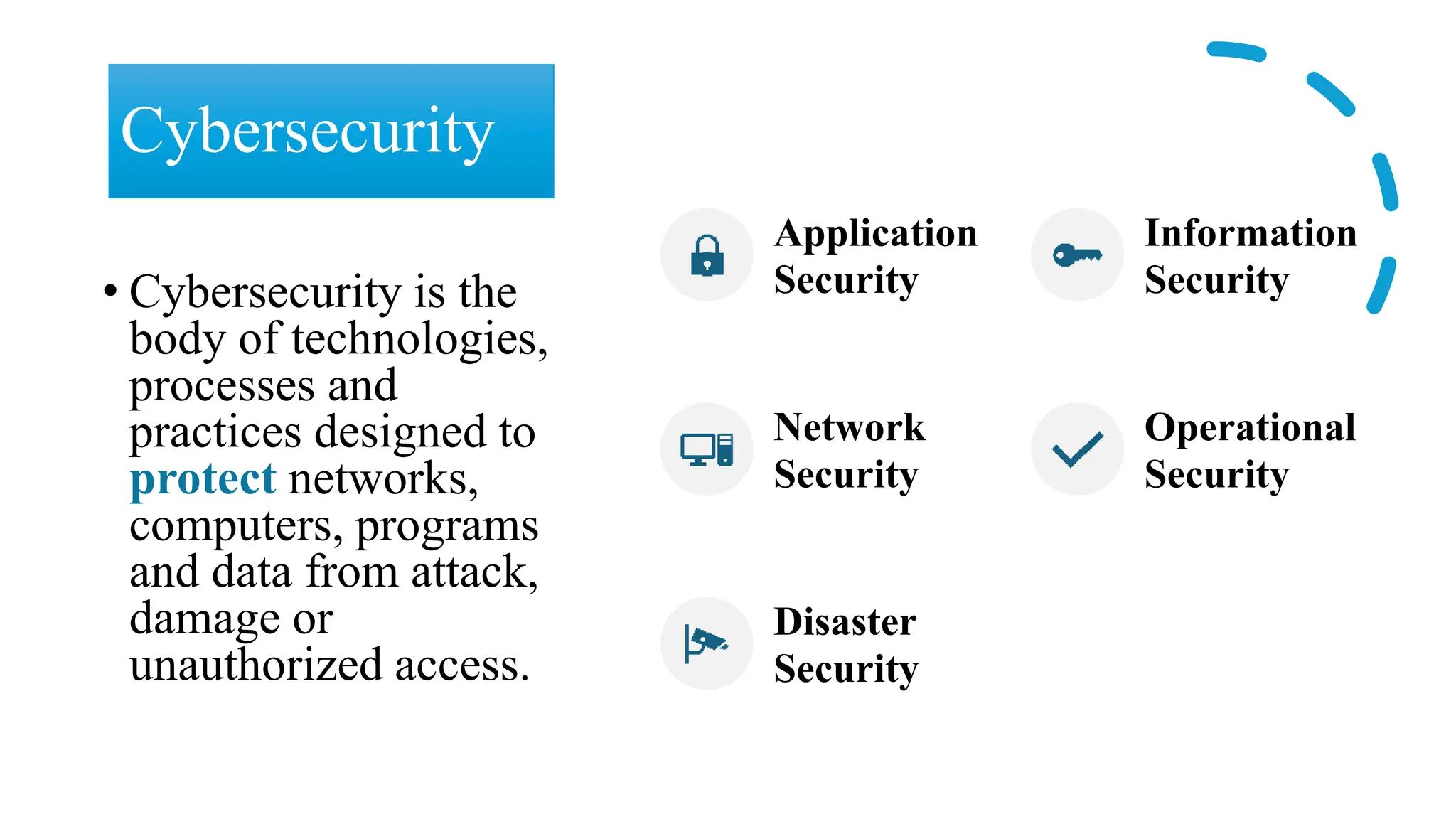
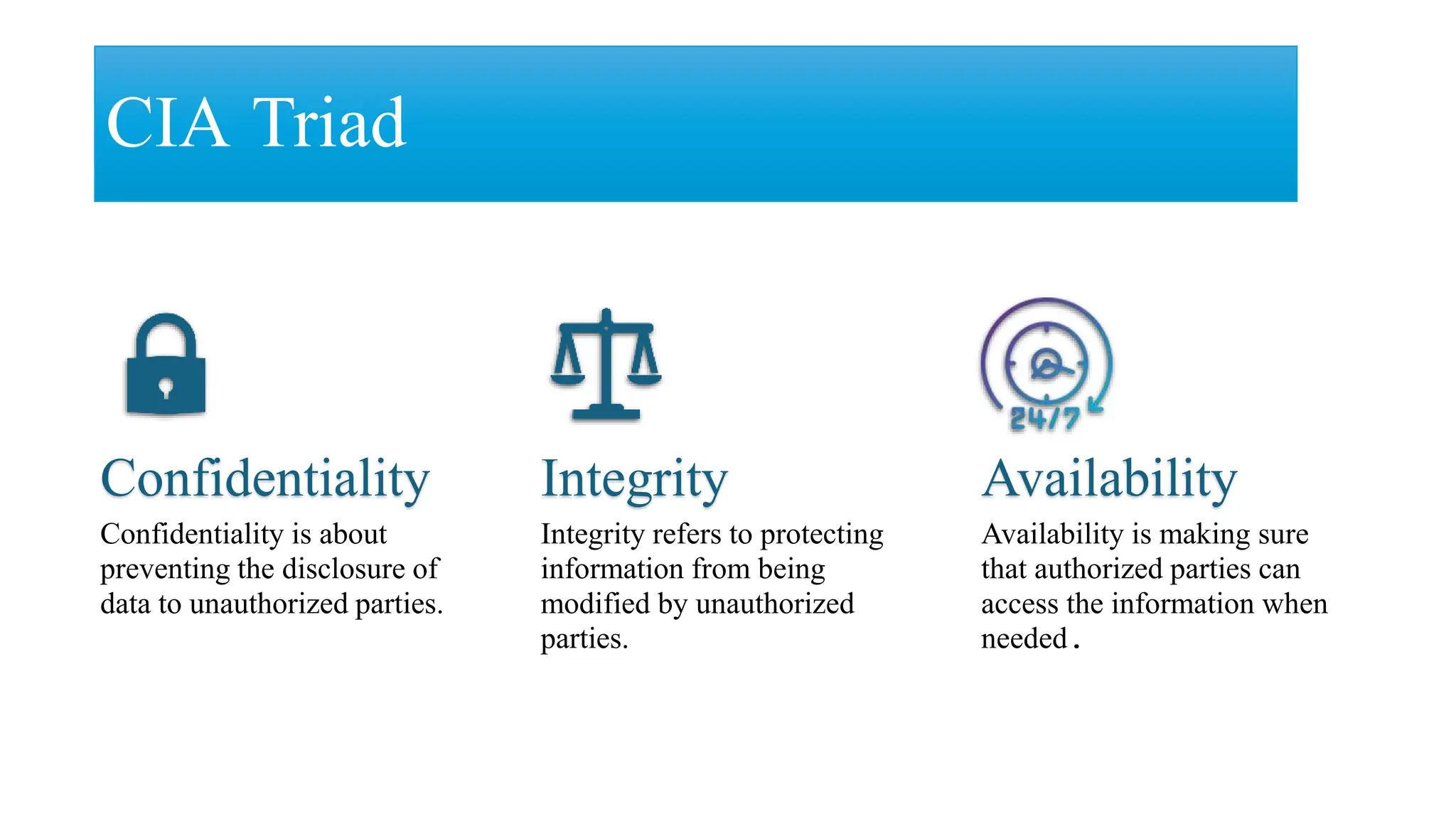
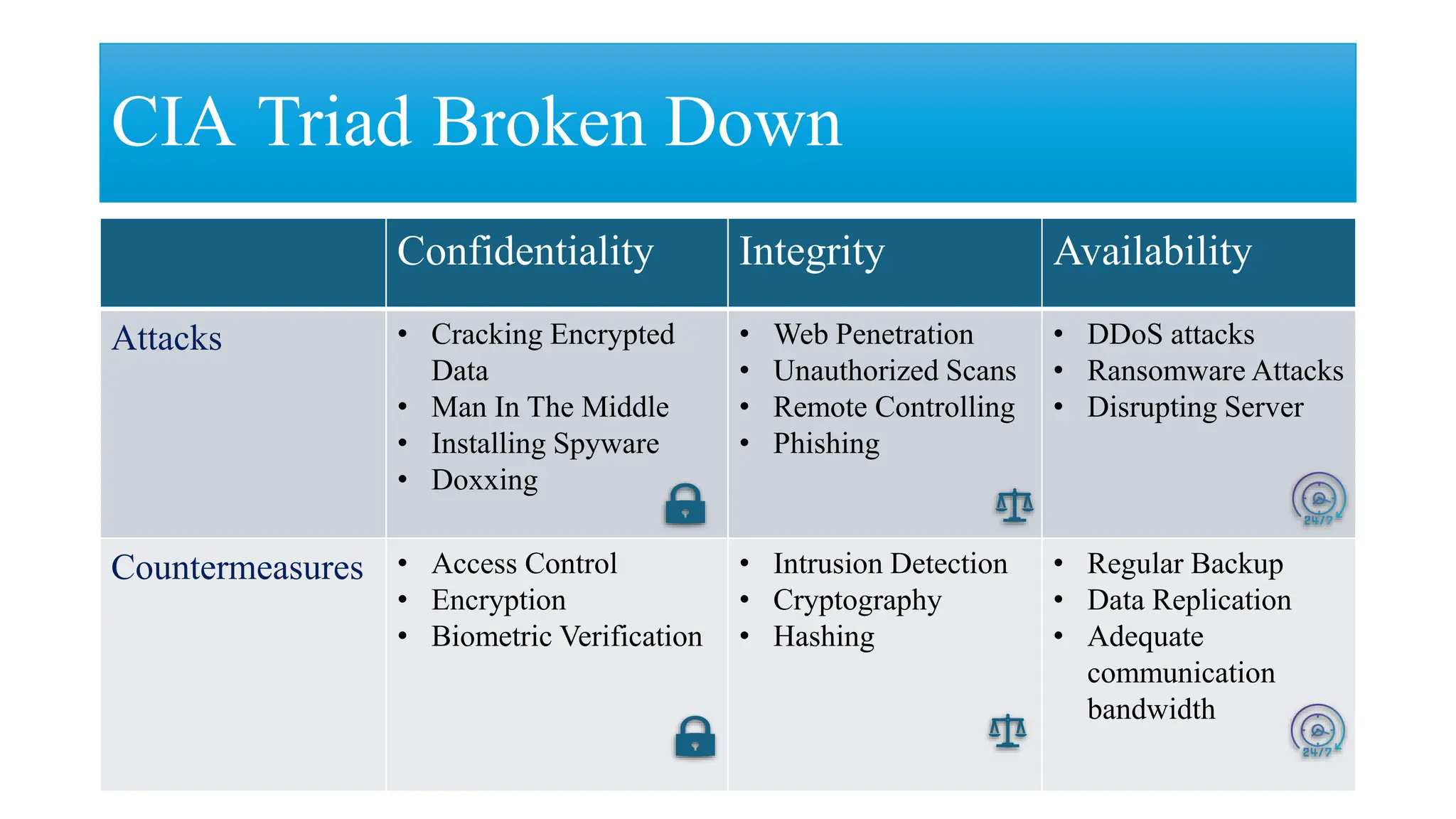
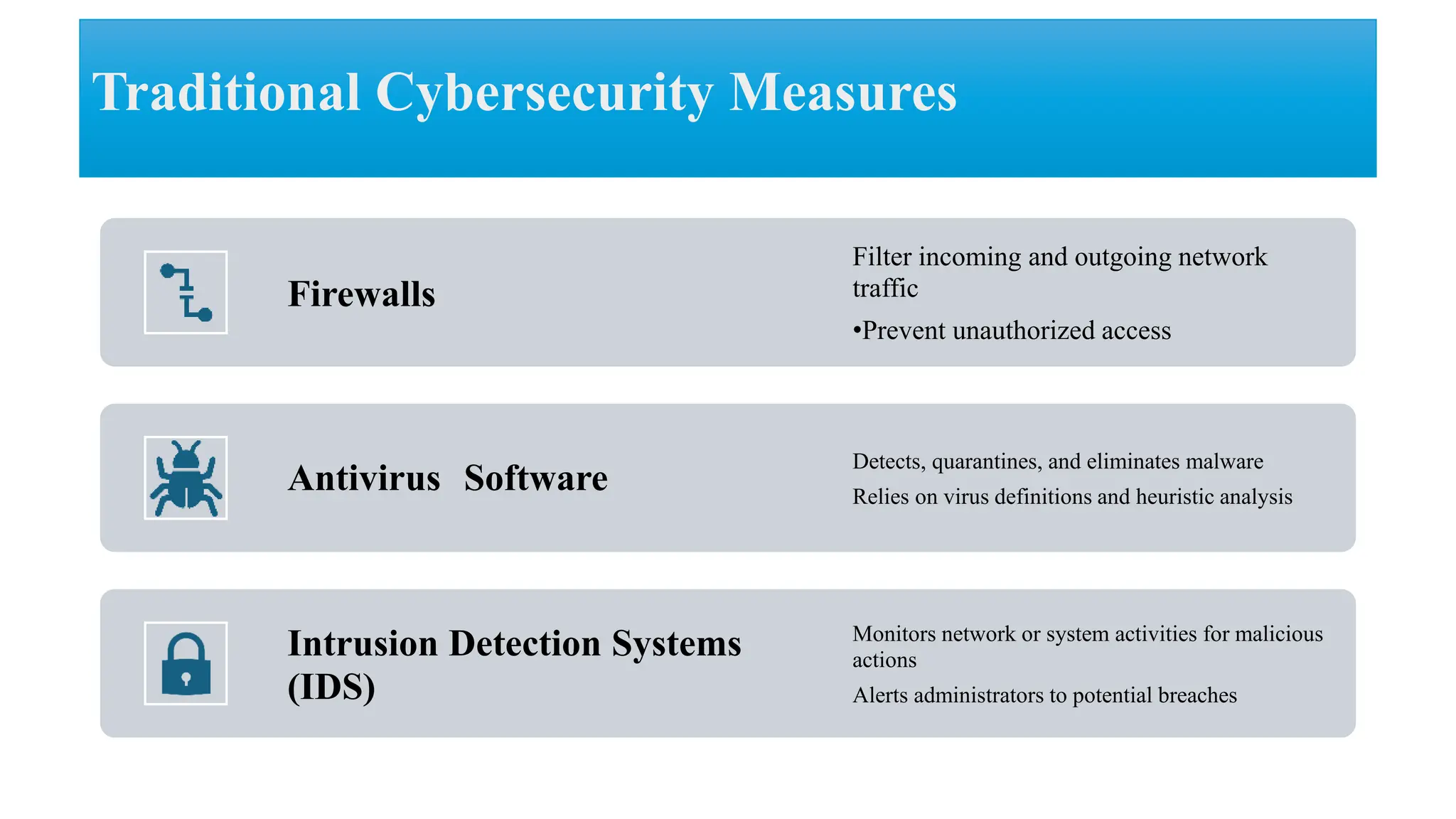

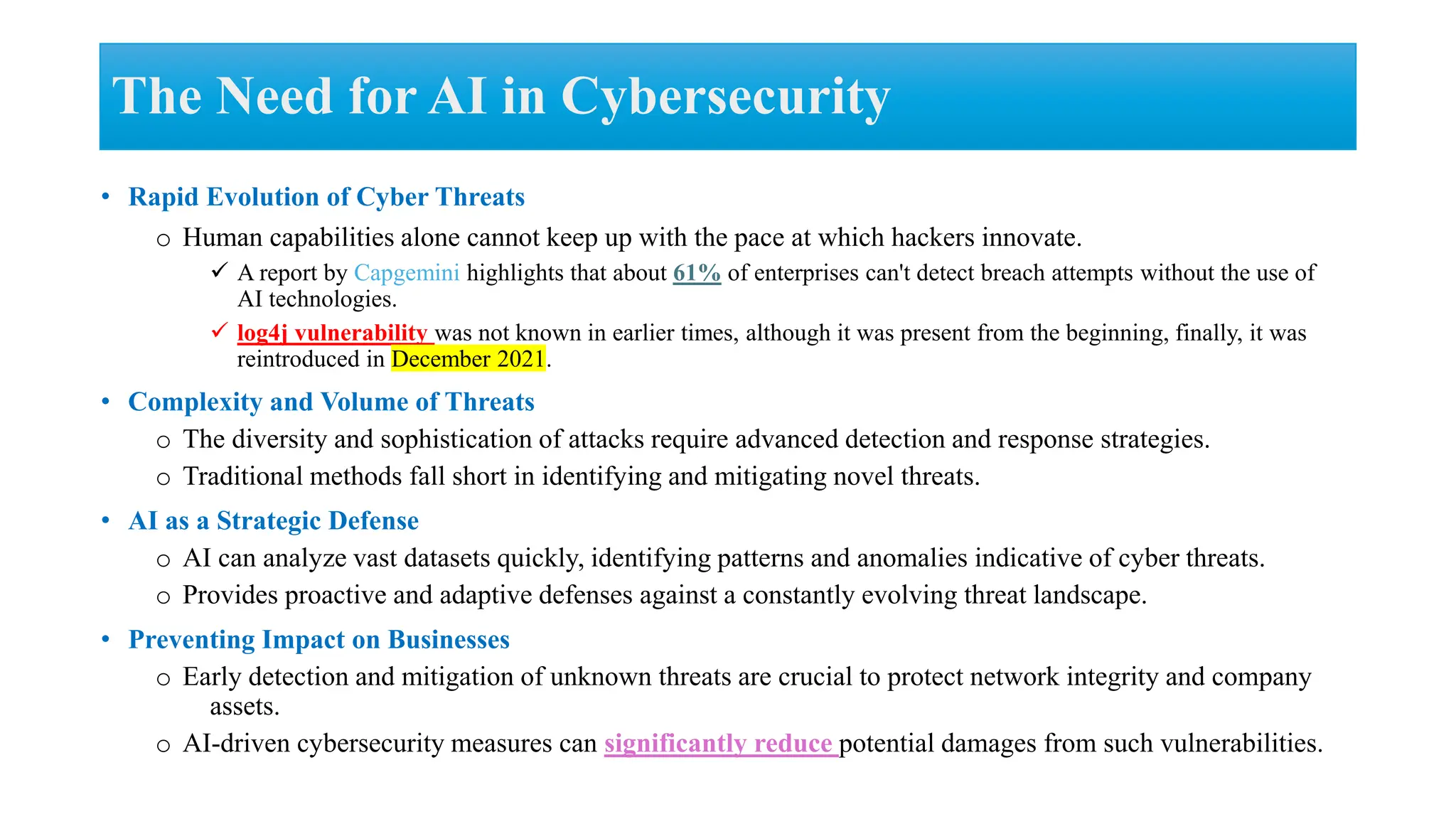
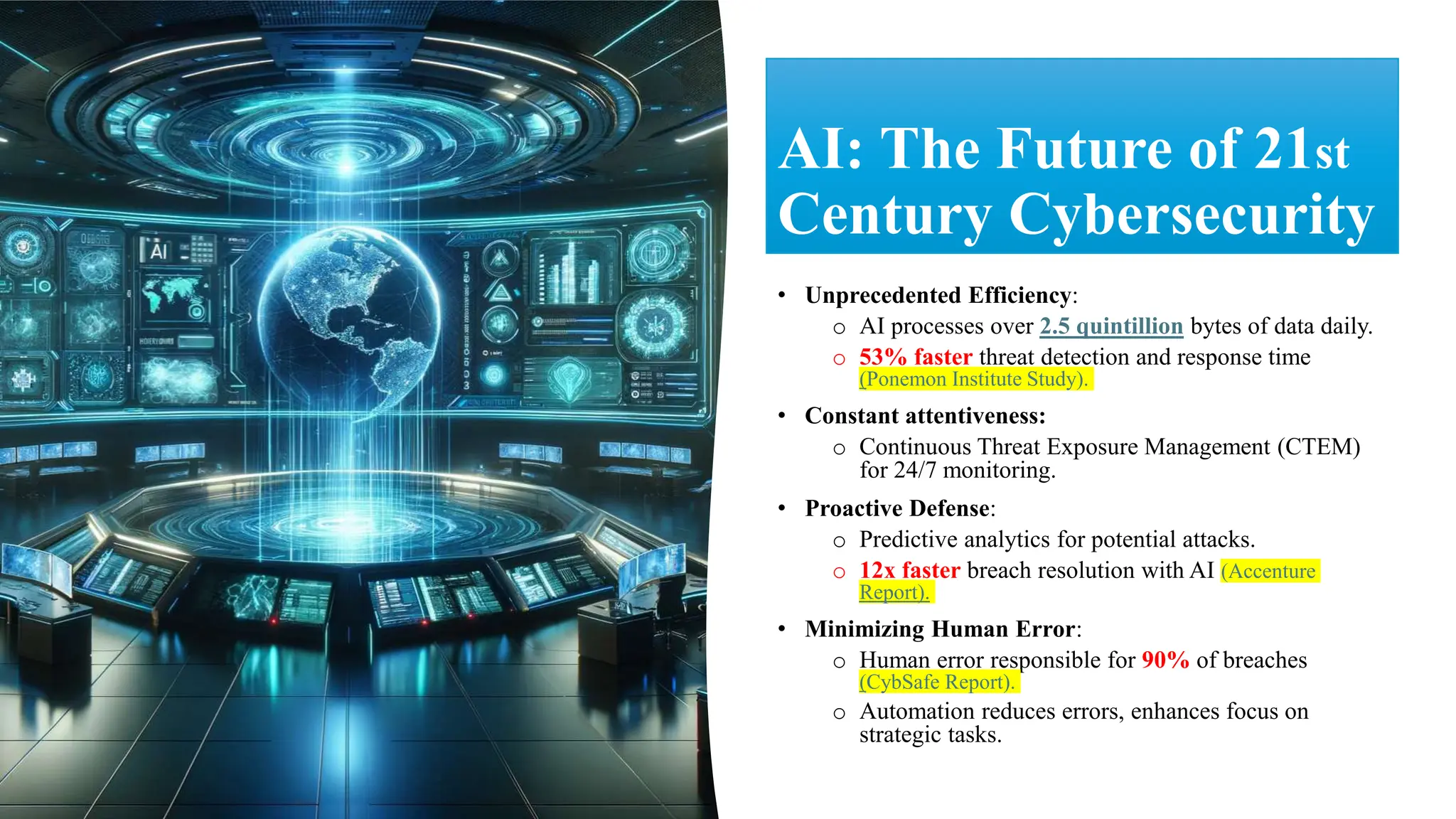
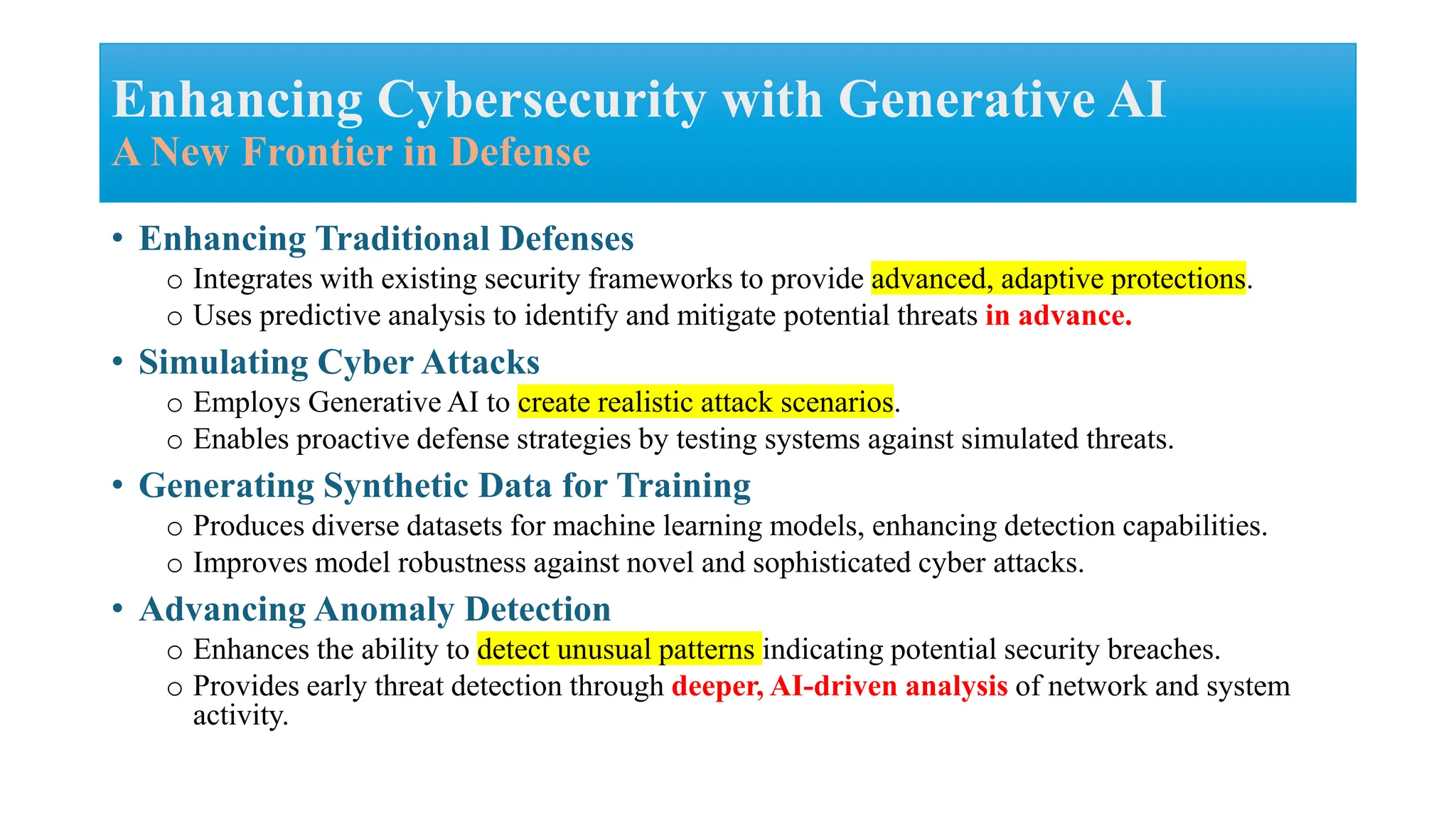

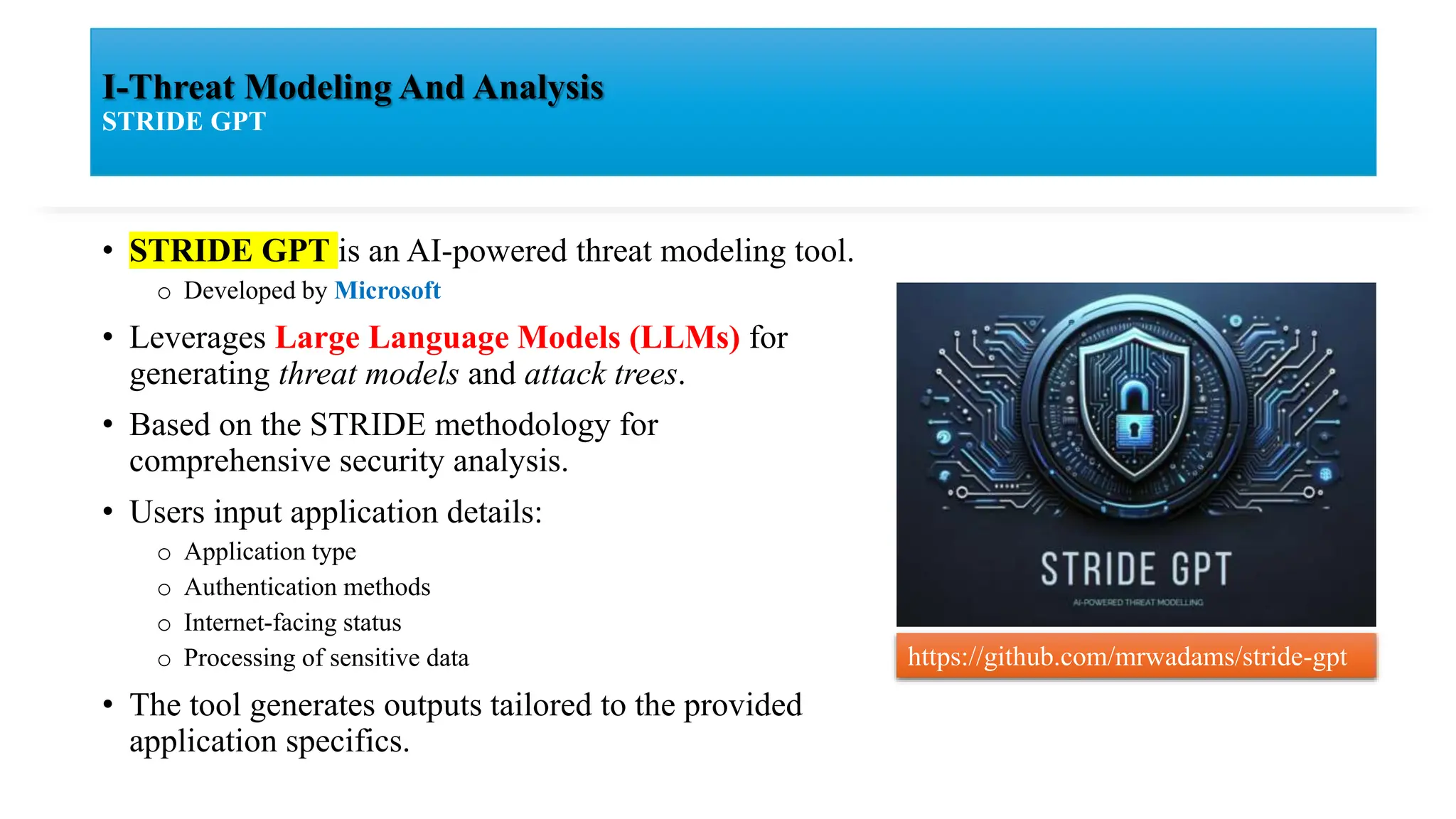
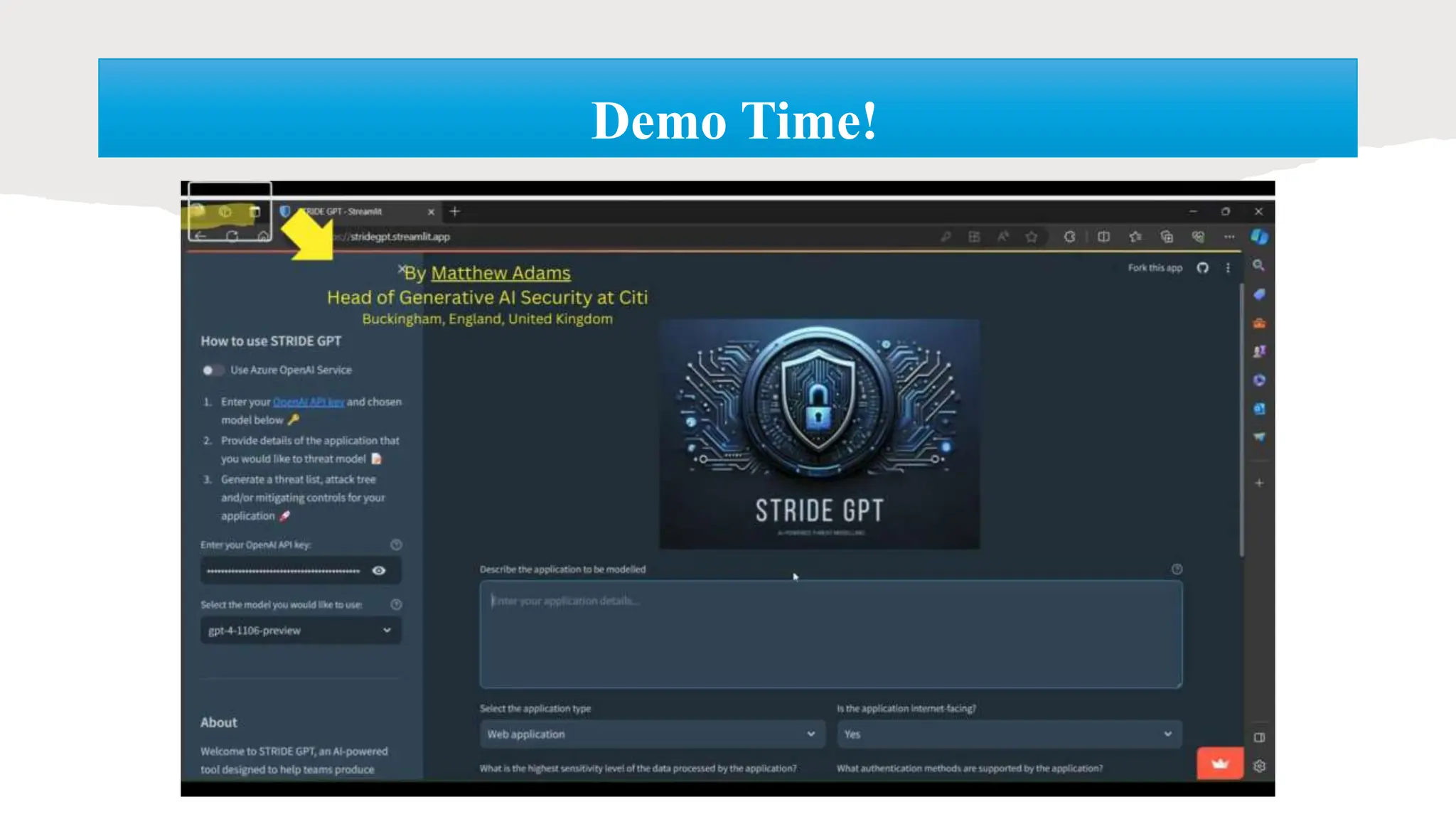
![• Objective: Compare the effectiveness of phishing emails created by GPT-4, the
V-Triad method, a combination of both, and a control group of generic phishing
emails.
• Method: Simulated phishing attacks on 112 participants using a red teaming
approach.
• Key Findings
Click-Through Rates:
o Control Group: 19-28%
o GPT-4 Generated: 30-44%
o V-Triad Generated: 69-79%
o Combined GPT-4 & V-Triad: 43-81%
Detection: Large language models (GPT, Claude, PaLM, LLaMA) effectively detected
phishing intent, sometimes outperforming human detection.
II- Synthetic Phishing Emails
Devising and Detecting Phishing Emails Using Large Language Models [2]](https://image.slidesharecdn.com/generativecybersecurityai-240408161138-1b52f403/75/AI-Cybersecurity-Pros-Cons-AI-is-reshaping-cybersecurity-31-2048.jpg)
![• Objective : To introduce SecurityBERT, a BERT-based architecture, for efficient cyber threat
detection in IoT networks, enhancing precision and minimizing computational demand.
• Method
o Utilization of Bidirectional Encoder Representations from Transformers (BERT) with a novel
Privacy-Preserving Fixed-Length Encoding (PPFLE) and the Byte-level Byte-Pair Encoder
(BBPE) Tokenizer.
o Evaluation using the Edge-IIoTset cybersecurity dataset for identifying fourteen distinct
attack types.
• Key Findings
o Performance: SecurityBERT achieved an impressive 98.2% accuracy, outperforming
traditional ML and DL models, including CNNs and RNNs.
o Efficiency: Demonstrated high efficiency with an inference time of <0.15 seconds on average
CPUs and a model size of 16.7MB, suitable for deployment on resource-constrained IoT
devices.
III- Threat Detection
Revolutionizing Cyber Threat Detection With Large Language Models: A Privacy-Preserving BERT-
Based Lightweight Model for IoT/IIoT Devices [3]](https://image.slidesharecdn.com/generativecybersecurityai-240408161138-1b52f403/75/AI-Cybersecurity-Pros-Cons-AI-is-reshaping-cybersecurity-32-2048.jpg)
![• Objective: Propose a novel AI-based NIDS to efficiently resolve data imbalance problems and
enhance detection performance of network threats.
• Method
o Utilized state-of-the-art Generative Adversarial Networks (GANs) models , BEGAN , to generate
synthetic data for underrepresented attack traffic.
o Focused on reconstruction error and Wasserstein distance-based GANs, alongside autoencoder-driven
Deep Neural Networks (DNN) and Convolutional Neural Networks (CNN).
o Conducted evaluations across various datasets, including benchmark datasets, IoT datasets, and real
enterprise system data.
• Key Findings
o Achieved detection accuracies up to 93.2% on the NSL-KDD dataset and 87% on the UNSW-NB15
dataset, significantly improving minor class performance.
o Demonstrated the system’s effectiveness in detecting network threats within distributed environments
and IoT settings.
o Highlighted remarkable improvement in threat detection rates in real-world environments by addressing
data imbalance.
IV- Anomaly Detection
An Enhanced AI-Based Network Intrusion Detection System Using Generative Adversarial Networks [4]](https://image.slidesharecdn.com/generativecybersecurityai-240408161138-1b52f403/75/AI-Cybersecurity-Pros-Cons-AI-is-reshaping-cybersecurity-33-2048.jpg)

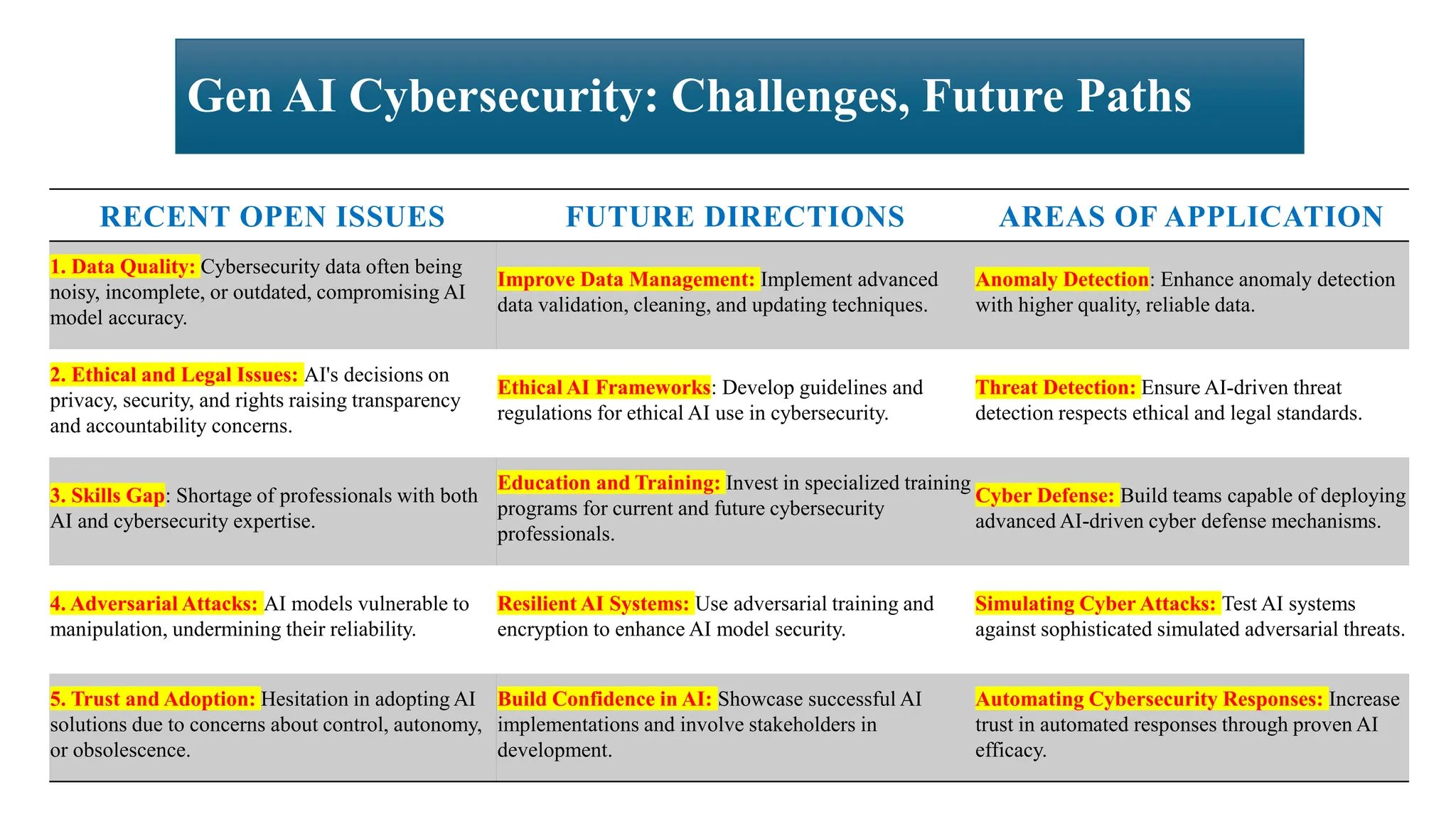
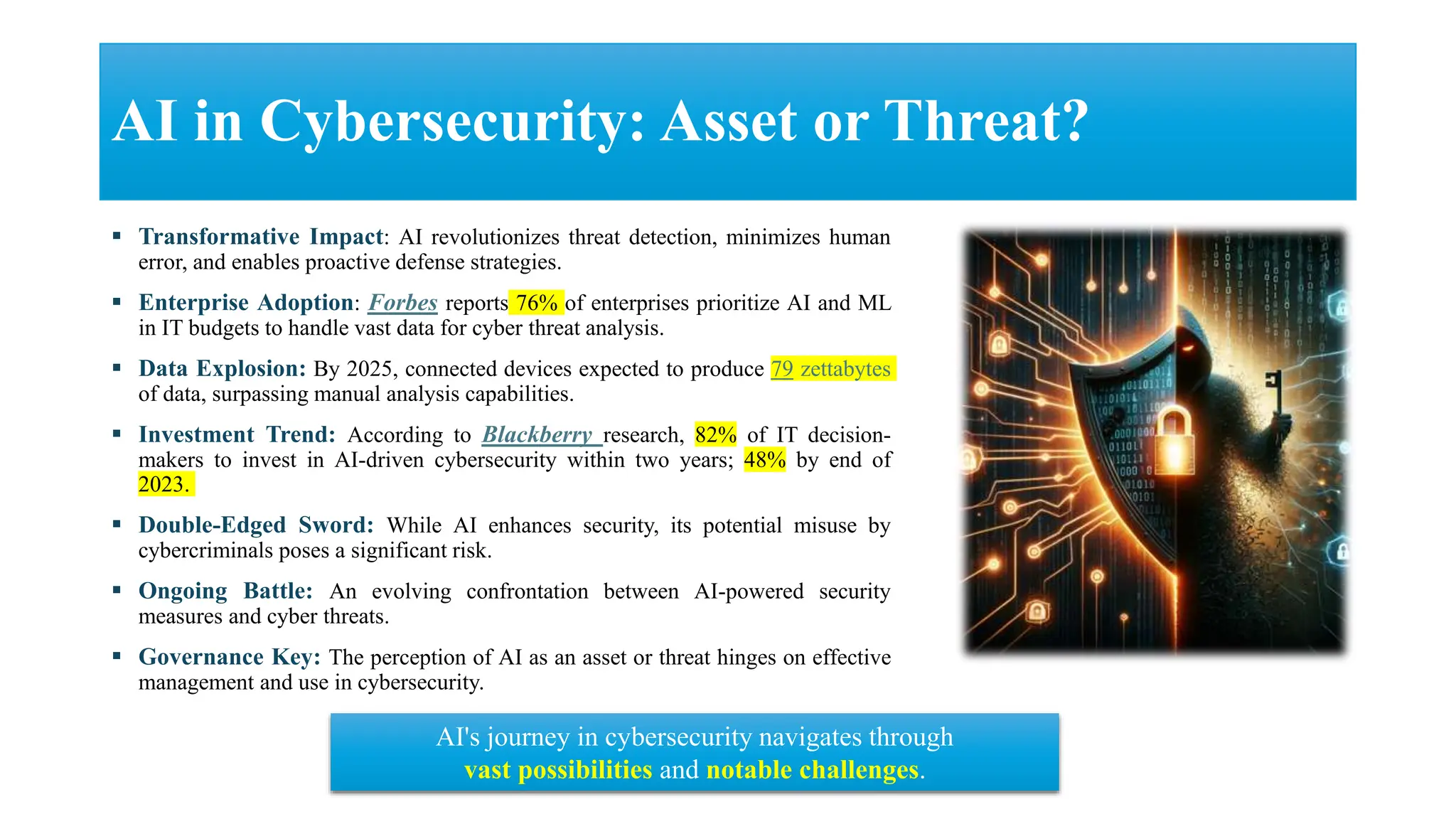
![References
[1] Jovanovic, M., & Campbell, M. (2022). Generative artificial intelligence: Trends and
prospects. Computer, 55(10), 107-112.
[2] Heiding, F., Schneier, B., Vishwanath, A., Bernstein, J., & Park, P. S. (2024).
Devising and detecting phishing emails using large language models. IEEE Access.
[3] Ferrag, M. A., Ndhlovu, M., Tihanyi, N., Cordeiro, L. C., Debbah, M., Lestable, T., &
Thandi, N. S. (2024). Revolutionizing Cyber Threat Detection with Large Language Models: A
privacy-preserving BERT-based Lightweight Model for IoT/IIoT Devices. IEEE Access.
[4] Park, C., Lee, J., Kim, Y., Park, J. G., Kim, H., & Hong, D. (2022). An enhanced AI-
based network intrusion detection system using generative adversarial networks. IEEE
Internet of Things Journal, 10(3), 2330-2345.](https://image.slidesharecdn.com/generativecybersecurityai-240408161138-1b52f403/75/AI-Cybersecurity-Pros-Cons-AI-is-reshaping-cybersecurity-37-2048.jpg)
